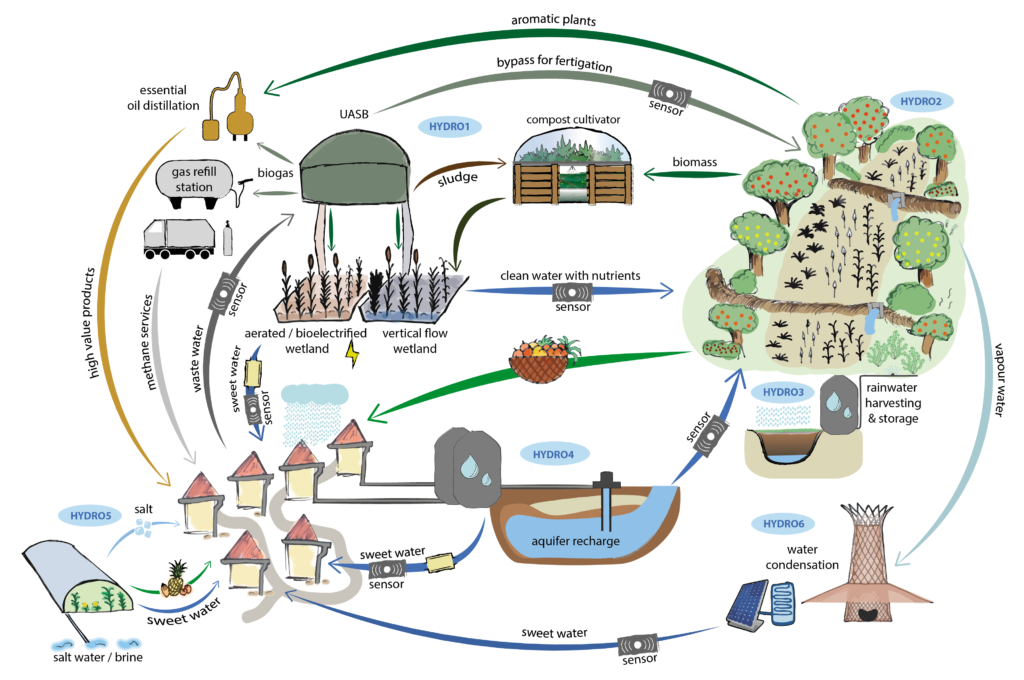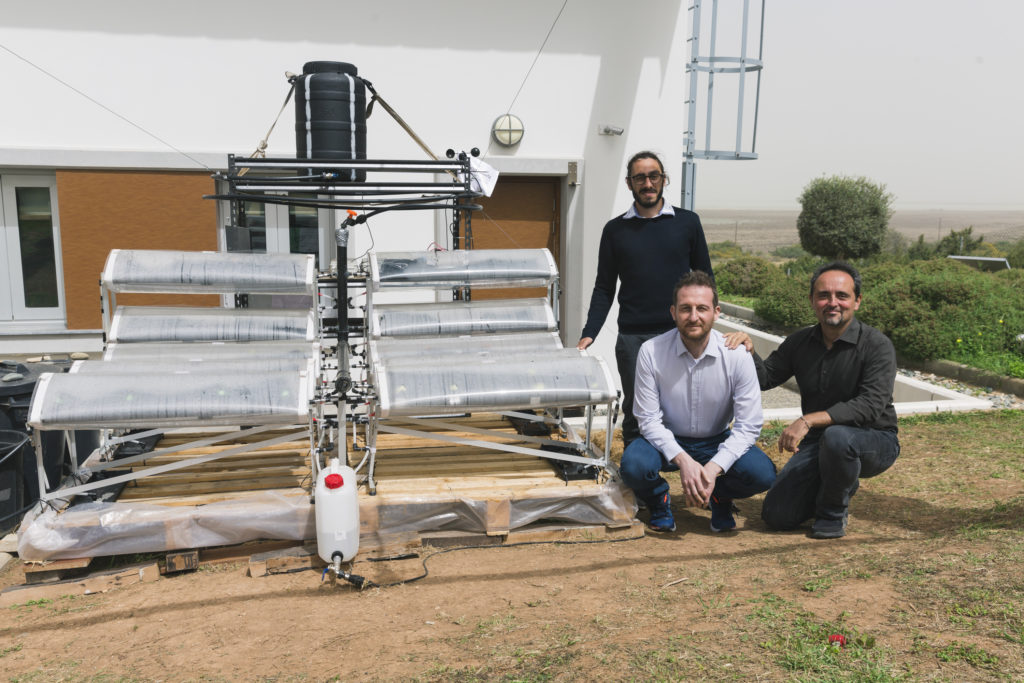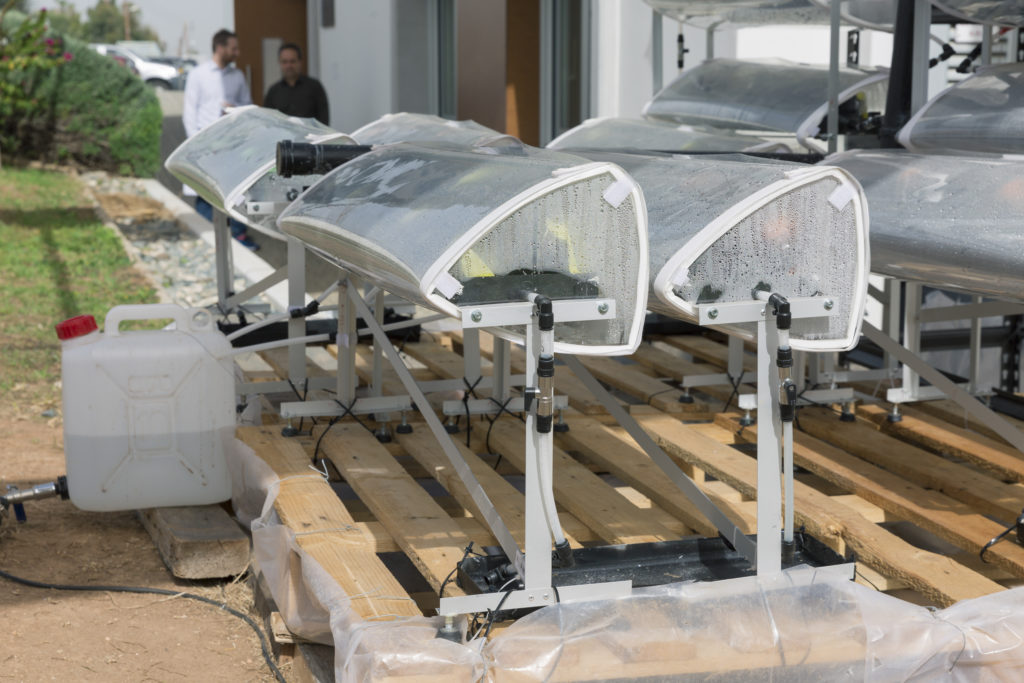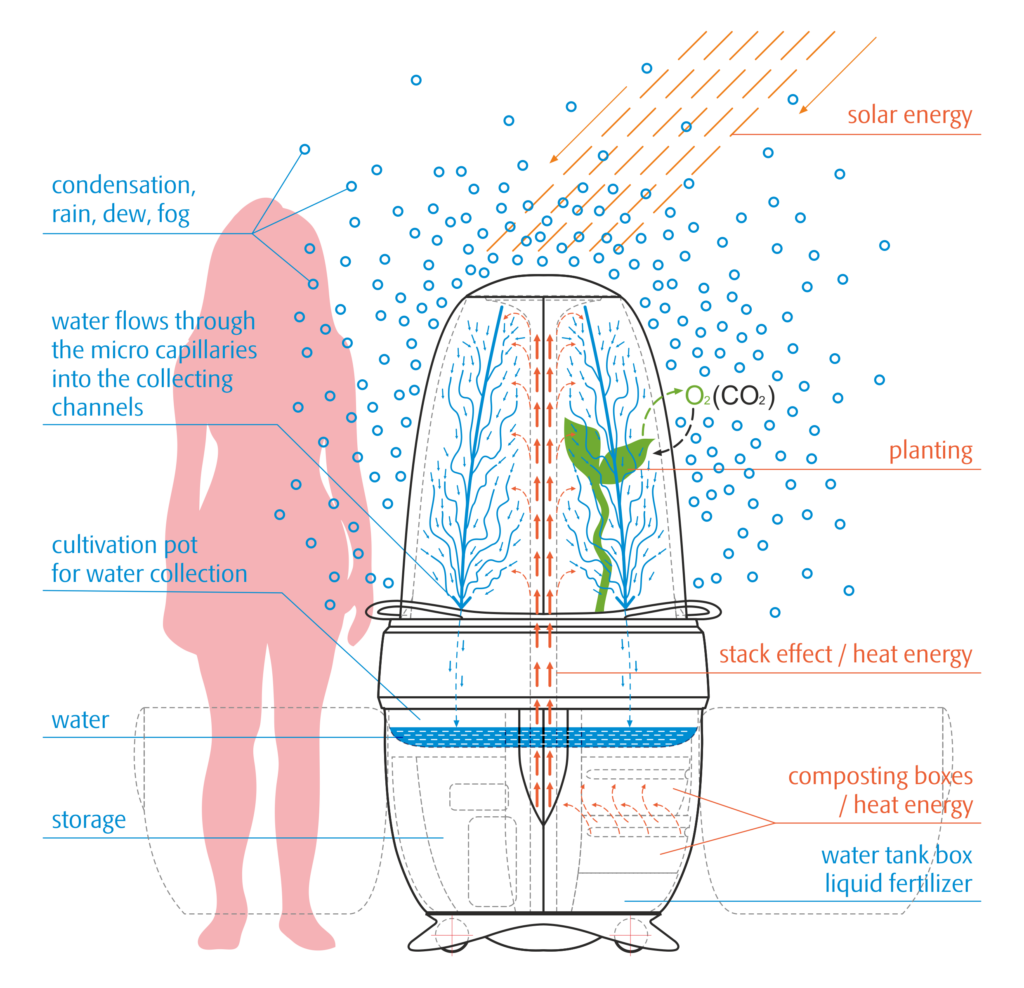Photo courtesy of HYDROUSA.
Meet two Launchpad alumni teams who are part of a European Union-funded project that is using nature-based systems to close water loops, feed the soil, and promote local economies.
Each summer, as temperatures climb and a crush of tourists descends, fresh water becomes scarce in Mediterranean coastal regions. Starting this year, an ambitious project aims to change that, by implementing a wide-scale demonstration of nature-based solutions that create an entire closed-loop water system. And two key parts of this system have come straight from the Biomimicry Launchpad.

Photo courtesy of HYDROUSA.
Two Biomimicry Launchpad alumni teams are part of a consortium that has won a €10 million grant from the European Union to use wastewater, rainwater, humidity, and seawater to create a regenerative system that will produce fresh water for agricultural and household use, plus create jobs in the region.
As part of the HYDROUSA grant, the Mangrove Still design, a desalinating still inspired by mangrove ecosystems, and the BIOcultivator, a growing/composting system inspired by lizards, will be incorporated and adapted into a pilot project on Greek islands. Alchemia Nova CEO Johannes Kisser brought these teams into the project and is leading up the development of the biomimicry applications in the grant, along with Regina Rowland at the University of Applied Sciences Burgenland.
“After looking into details of different biomimicry technologies I thought about ways of integrating some of them in these grants,” said Kisser. “So I came up with adaptations of these technologies to better fit our needs.”

Team Planet with the Mangrove Still
The Mangrove Still system will be used in a seawater treatment demonstration project on the island of Tinos. The team will build a full-scale Mangrove Still plant to produce fresh water from seawater to feed a greenhouse that will grow tropical fruits. The Mangrove Still’s design optimizes light capture, surface to volume ratio, and thermoregulation to create a lower-cost and efficient method of desalinating seawater, built with recyclable, reusable materials.

The Mangrove Still design
“Being part of the Biomimicry Launchpad allowed us to build up confidence and give us the necessary visibility and credibility towards access to future partners and grants to further develop our product and bring it closer to the market,” said Alessandro Bianciardi, co-creator of the Mangrove Still.

Diagram of the BIOCultivator
The BIOcultivator design was the inspiration for a compost cultivator that will be used to fertilize and irrigate soil on the island of Lesbos. The BIOcultivator was initially envisioned as a way to enable city dwellers to grow food on their balconies, with an all-in-one design that collected water, composted, and grew plants. The design was inspired by the Texas horned lizard’s ability to collect water with its skin in arid environments. In the HYDROUSA project, this design will be adapted and scaled to compost sewage sludge and biomass, which will be used to irrigate and fertilize soil.
The founder of BIOcultivator, Zuzana Tončíková, said she and her team are thrilled that their design will be used on a wider scale than they originally anticipated. “[Originally,] the BIOcultivator fit best into the big balconies and terraces of modern apartments,” said Tončíková. “We are very excited that our idea will have a wider impact and improve people’s living environments.”

The BIOCultivator team presents at the BGDC Pitch Event. Photo: Stefanie Atkinson Schwarz
Another biomimicry solution, the Warka Tower, an atmospheric water collection design inspired by the desert beetle, will be used to collect moisture from the air to be used in this water loop.
It’s all part of an effort to demonstrate and test innovations that close water loops, feed the soil, and promote local economies.
The Mangrove Still and BIOcultivator teams’ EU grant collaboration is just one example of how a group of nature-inspired entrepreneurs is leveraging their Launchpad experience to effect true and lasting change in the world.
“The Challenge/Launchpad was the most important step in our development process,” said Tončíková. “Without the participation in the Challenge, our idea would still remain as a concept on paper. Without the Launchpad, we would never had the opportunity to share the concept and scale it up into ideas like the [HYDROUSA’s] compost cultivator. We had the opportunity to be presented in relevant media, and the right people contacted us and directed our professional development.”
To learn more about the Launchpad and meet the 2018 Launchpad cohort, visit innovation.biomimicry.org/launchpad.

